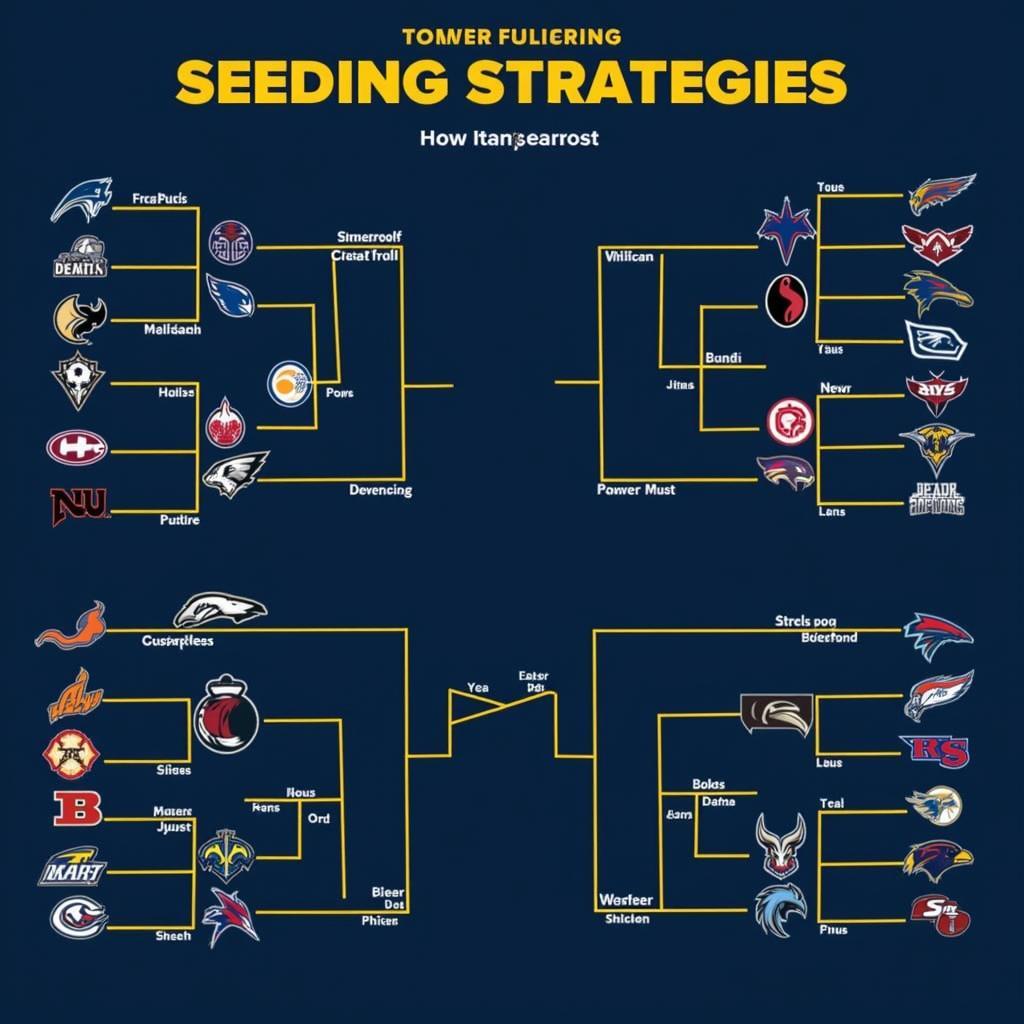Mastering the 27 Team Bracket: A Comprehensive Guide
October 9, 2024Understanding the intricacies of a 27 Team Bracket can be a game-changer for any sports enthusiast. Whether you’re organizing a tournament or simply trying to predict the outcome, a firm grasp of this bracket format is essential. This guide delves into the world of 27 team brackets, equipping you with the knowledge to navigate its unique structure and potential challenges.
 A visual representation of a single-elimination 27 team bracket
A visual representation of a single-elimination 27 team bracket
Deciphering the 27 Team Bracket: Single and Double Elimination
A 27 team bracket presents a unique set of circumstances due to the odd number of participants. The most common approach is to employ a single-elimination format, where one loss eliminates a team from the tournament. In this scenario, byes are strategically placed to ensure a balanced progression towards the final matchup.
Alternatively, a double-elimination format, while more complex, offers a forgiving structure where teams have a chance to redeem themselves after a loss. This format often leads to longer tournaments but adds an extra layer of excitement and unpredictability.
 A comprehensive example of a double-elimination 27 team bracket
A comprehensive example of a double-elimination 27 team bracket
Navigating the Byes: Ensuring Fairness and Balance
The inclusion of byes is crucial in a 27 team bracket to accommodate the odd number of participants. Determining the number and placement of byes is essential for maintaining fairness and ensuring a balanced competition. Typically, the number of byes is calculated to reach the nearest power of two, which in this case is 32. This means incorporating 5 byes into the bracket.
Strategically positioning these byes is paramount. A common approach is to award byes to the highest-ranked teams, rewarding their prior performance. Alternatively, byes can be distributed randomly, adding an element of chance to the early rounds.
Seeding the Teams: Strategies and Considerations
Seeding, the process of ranking teams based on their perceived strength, plays a vital role in a 27 team bracket. Effective seeding ensures that the top-ranked teams are less likely to face each other in the early stages, maximizing fairness and excitement.
Various seeding methods exist, ranging from simple ranking systems to more complex algorithms that factor in past performance, head-to-head records, and other relevant metrics. Selecting the most appropriate seeding method depends on the specific context of the tournament and the desired level of competitiveness.
“When constructing a 27 team bracket, meticulous seeding is paramount for fostering a level playing field and maximizing engagement. Utilizing a combination of objective data and expert analysis can significantly enhance the accuracy and effectiveness of the seeding process.” – Dr. Emily Carter, Sports Analytics Specialist
 Visual representation of different seeding strategies for a 27 team bracket
Visual representation of different seeding strategies for a 27 team bracket
Beyond the Bracket: Factors Influencing Outcomes
While understanding the bracket structure is essential, several external factors can significantly influence the outcome of a 27 team tournament.
- Player Performance: Individual and team performance on a given day can dramatically impact the results. Factors like injuries, fatigue, and psychological pressure can all play a role.
- Team Chemistry and Coaching: A team’s cohesiveness, communication, and strategic prowess, guided by effective coaching, can be decisive factors, especially in pressure situations.
- External Factors: Unexpected circumstances like weather conditions, venue changes, or even referee decisions can introduce unpredictable elements that affect the course of the tournament.
Conclusion
Mastering the 27 team bracket requires a thorough understanding of its structure, the importance of byes and seeding, and the influence of external factors. By carefully considering these aspects, organizers and participants alike can navigate this unique bracket format and elevate their tournament experience.